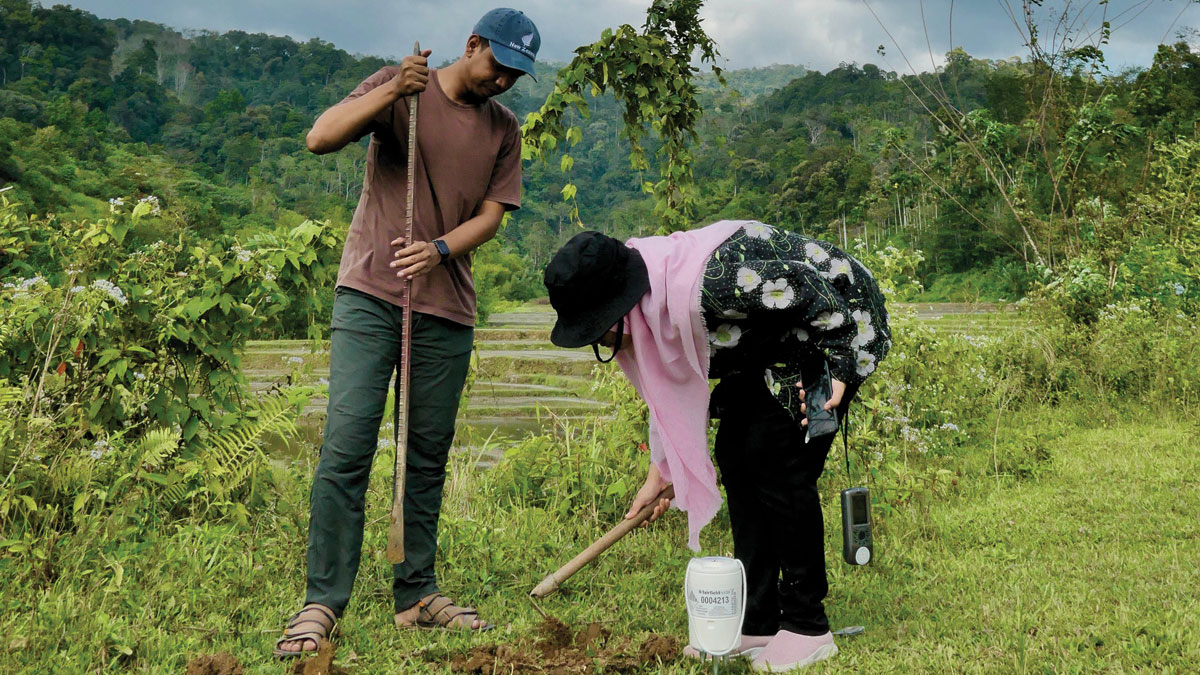Every issue of Eos is for you, the explorer. Whether you’re strapping into a helicopter to fly over a volcano, sifting through data to find patterns, or reading through the latest science news, you’re dedicated to seeking the new and wonderous.
Our July issue is all about that urge to set out on a voyage of discovery. Of course, that isn’t always possible to do in person, but Earth and space scientists are innovators when it comes to bringing the world to our doorstep. In “An Unprecedented View Inside a Hurricane,” Gregory R. Foltz and colleagues write about their clever use of technology to get an incredible view from inside a category 4 storm: Read about this partnership with NOAA to develop the saildrone that spent days surfing four-story-high waves inside Hurricane Sam—and how the scientists will use the data they collected to improve hurricane intensity forecasts.
Then we follow a class of students in their first trek into the field. An international team set out to deploy a seismic network in Sumatra, Indonesia, to learn more about the Sunda subduction zone, the source of devastating hazards in the region. Karen Lythgoe and her colleagues from the Earth Observatory of Singapore and Universitas Syiah Kuala write about their work in “Striking Out into the Field to Track Slip on the Sumatran Fault.”
They recruited a team of students from their institutions—two of whom, Dian Darisma and Wiwik Ayu Ningsih, are featured on this month’s cover—to get their hands dirty placing seismic nodes into the ground all around the Aceh region. Read about how they approached the many challenges of this type of fieldwork, from explaining their research to local police and village leaders (who often did not speak the same language) to leeches and tree cover that obstructed GPS signals to a pandemic and the perils of leaving instruments unattended for an extended period of time.
Next, let’s take our seismometers and head somewhere cooler: Greenland. Evgeny A. Podolskiy writes about deploying seafloor instruments near a calving glacier front in “Arctic Unicorns and the Secret Sounds of a Glacial Fjord.” Glaciological processes can be difficult to study, largely because deploying instruments close enough to monitor them is dangerous work. Read on to learn about how Podolskiy’s team at the Arctic Research Center in Hokkaido, Japan, managed to get their instrument to the bottom of Bowdoin Fjord, how their hard work was saved by an Inuit whale hunter, and what their seismic data also told them about the notoriously reticent local wildlife—narwals.
Finally, don’t put down the issue before reading the Opinion by Marjorie Cantine. “Playing It Safe in Field Science” is an essential chapter in this issue dedicated to fieldwork. Going out to have incredible, life-changing adventures and keeping yourself and your colleagues safe should not be mutually exclusive pursuits. Cantine is leading one of a few efforts to better understand—and thus be able to prepare for—dangers in the field.
Once you have your adventures in the field and the lab and everywhere in between, remember to come back and tell us about them. Begin telling your tales of how science really gets done at eos.org/submit.
—Heather Goss (@heathermg), Editor in Chief


